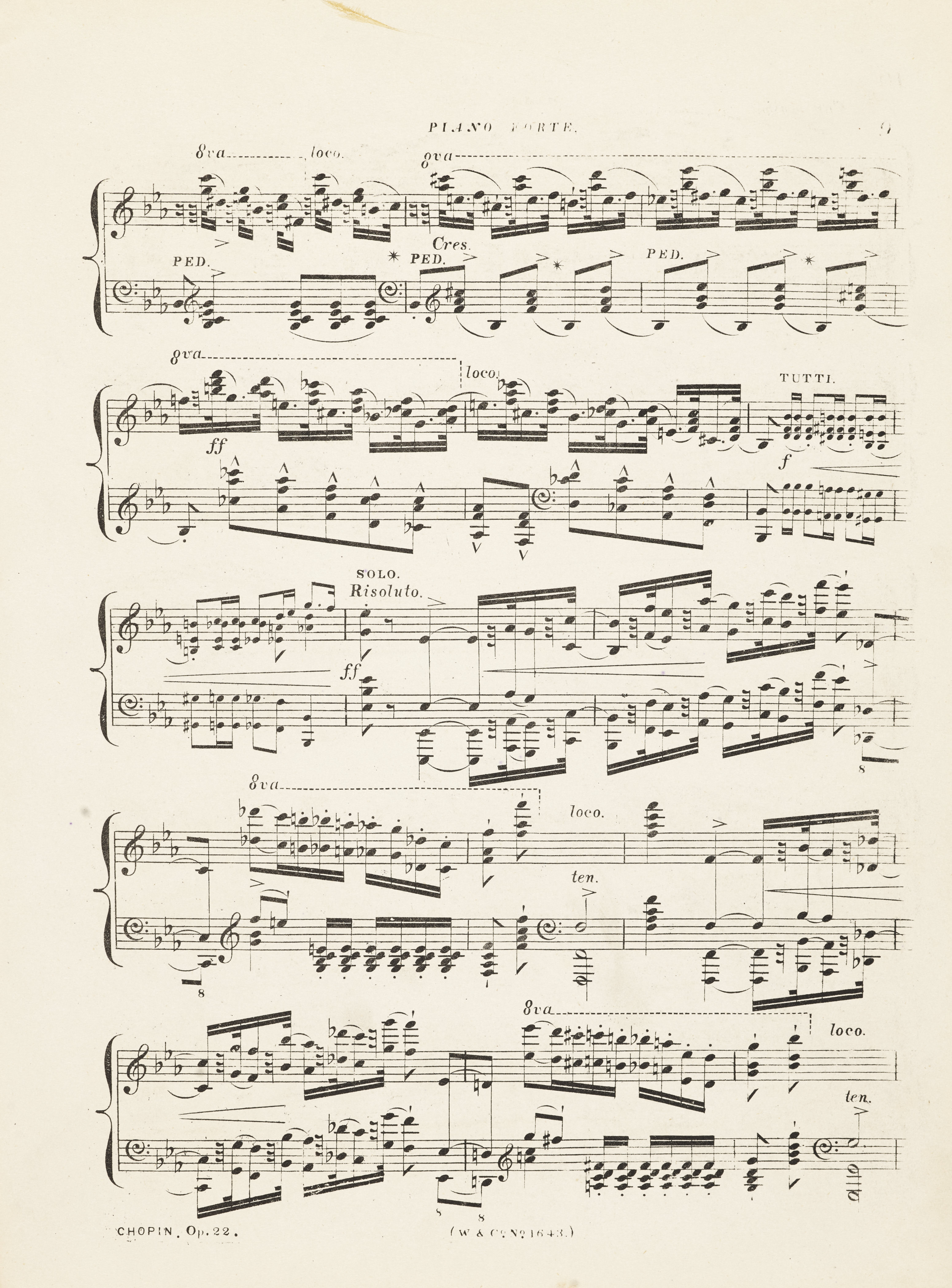Op. 2, Variations in B♭ major
Op. 10, 12 Etudes
Op. 11, Concerto in E minor
Op. 21, Concerto in F minor
Op. 22, Polonaise in E♭ major
Op. 24, 4 Mazurkas
Op. 25, 12 Etudes
Op. 26, 2 Polonaises
Op. 27, 2 Nocturnes
Op. 28, 24 Preludes
Op. 30, 4 Mazurkas
Op. 35, Sonata in B♭ minor
Op. 50, 3 Mazurkas
Op. 63, 3 Mazurkas
Op. 64, 3 Waltzes
(Op. 4), Sonata in C minor




Op. 22, Polonaise
According to us, there is no doubt that Chopin was forced to abandon the action of moving the chord an octave higher, which is pianistically natural and typical of virtuoso cadenza formulas – cf. b. 80 – only due to the limited range of the piano.
Compare the passage in the sources »
category imprint: Editorial revisions
notation: Pitch


 2-d3-b
2-d3-b
